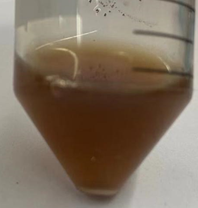Part:BBa_K3628025
HpaBC
Description
This part codes HpaBC-wild type, contains HpaB, HpaCand RBS1 between HpaB and HpaC
Usage and Biology
Experimental setup
- we first prepare DH10b[1], a strain that is integrated with T7RNAP constitutive expression unit, as component cell.
- Then we transform HpaBC-WT and HpaBC-SMS to component cells, respectively.
- The monoclonals are later overnight cultivated, and is then inoculated into fresh LB medium with a proportion of 1:200.
- The samples are then cultivated for 48h, in 37℃, 220rpm. Samples are taken out, after the 48-hours-long cultivation, to measure for its L-dopa concentration.
- The detailed description of measurement is illustrated below
Results
We culture our strains overnight and find medium turning dark.
To explore the best substrate concentration for L-Dopa production, In this test, leveled concentrations of the substrate, tyrosine, (0mM, 0.03mM, 0.3mM, 1.5mM, 3mM, 4.5mM, 6mM, 9mM) are prepared. We then inoculate Bacteria in 7 mL LB medium and take for 500μL each time. They are taken at specific points: 30h, 39h, 42h, 50h. We use microplate reader to measure its absorbance under OD 400, and we determined the production of L-Dopa with standard curve of levodopa.
The results are listed below.
The following column is about levodopa concentration in 3mM samples cultured for 42h.
We can observe from the graph that, after codon optimization, HpaBC has presented higher biological activity. In the cultivation where the concentration of tyrosine is 3mM, after 42 hours of cultivation, the production of levodopa in HpaBC-WT is 0.88 mol/L; in the cultivation of HpaBC-SMS, the production is 1.12 mol/L. We thus chose HpaBC-SMS for the following experiments.
| None |




